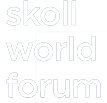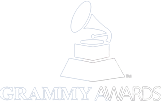Home Frank’s Blog Sound Health: The Future Is In Your Ears
Sound Health: The Future Is In Your Ears
Frank Fitzpatrick 04/12/2019
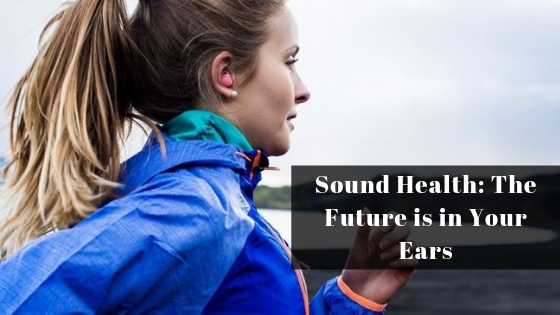
|
No time to read? Pick your language & press PLAY
Getting your Trinity Audio player ready...
|
“The eye takes a person into the world. The ear brings the world into a human being.”
Lorenze Oken
Imagine yourself wearing your brand new pair of highly fashionable wireless and ultra-small smart earbuds comfortably tucked away within your ears. Imagine that within these tiny devices lives a turbo-charged computer, a high-fidelity audio system, and a sophisticated set of sensors specifically designed to improve your well-being and quality of life.
While you are going about your daily routine, your ear buddies are busy monitoring, filtering, or enhancing what goes in, listening to your requests, and providing real-time feedback and personalized recommendations based on how all that stimuli impact the state of your mind and body.
Imagine that through these stylish tech companions, you can:
- Filter out unwanted background noise from busy restaurants, traffic, or shared workspaces.
- Listen to high-quality audio of your favorite music, meditation, or motivational speaker.
- Amplify the voice of a selected person in a crowded room to hear them more clearly.
- Converse with people speaking another language through a spontaneous translator.
- Enhance the quality of your sleep.
- Communicate more seamlessly with your personal voice assistant (Alexa, Siri, etc.).
- Replace those other wearables wrapped around your head, chest, or wrists.
- Hear music better at an outdoor concert while keeping volume levels at a healthy threshold.
- Measure the real-time impact auditory input has on your performance, productivity, and well-being.
- Seamlessly monitor your emotional and physiological states, and receive personalized solutions, on demand, for shifting them.
- Track and share vital healthcare data with your doctor without having to go to a lab or hospital, or being tied down by the wiring from traditional medical monitors.
- Refine the quality of personalized content and therapeutic recommendations for optimizing your well-being, performance, and happiness.
Welcome to the world of Hearables.
From the long list of possibilities above, it is easy to see why multiple startups and tech giants like Google, Amazon, Apple, and Samsung are busy assembling world-class teams, acquiring key players in health tech, voice, and audio, and investing serious coin into Hearables – the future of Wearables.
After years of often-siloed technological breakthroughs in a number of the key fields required to usher the new age of Hearables into the mainstream, companies are connecting the dots. We are quickly approaching the perfect storm – a convergence of the latest in AI, nanotech, Big Data, voice recognition technology, in-ear sensor capability, preventive-care awareness, personalized medicine, real-time vitals tracking, and audio and wellness research. In the not-so-distant future, this omnipotent combination of forces will be directly linked to personalized input and content designed to improve your performance, mood, and well-being – all from a device that fits inside your ear.
Just as Steve Jobs combined a number of fragmented technologies with an incomparable UX to revolutionize the smartphone industry, the opportunity is ripe in the world of hearables. The key capabilities of the technology are already out there. They are awaiting the right player to connect the dots into an integrated, user-friendly, and exquisitely designed a set of products that will change the way we experience the world, through our ears. And you can expect to see examples of such products transforming multiple industries, including the more obvious: music, sports, business productivity, and healthcare.
If you’ve been looking behind the curtains over the past several years, as have many of my colleagues at Singularity University’s Exponential Medicine, you’ve seen these opportunities approaching on the horizon. And you are not alone.
Prior to their acquisition by Dolby Labs in 2017, the startup Doppler Labs had a major influence on the acceleration of the hearable movement. Founders, music industry executive Noah Kraft and ex-Microsoft exec Fritz Lanman, first created the company in 2013 to help music festival attendees customize their music listening experience. They quickly evolved into cutting edge products that focused on hearing augmentation, while allowing the user to stream music and make phone calls. The company captured the attention of Microsoft’s Bill Gates, Apple’s Internet lead Eddie Cue, and Beats founder Jimmy Iovine, before selling off their patents to Dolby Labs.
Bose, already one of the world’s leading headphone and audio companies, stepped up as a player last year with the release of their noise-masking sleep buds and their acquisition of the Sync Project – a Boston-based startup helmed by ex-Nokia product designer Marko Ahtisaari, established to create the world’s largest opensource databases for music and health research.
Samsung, which owns Samsung Health, acquired the audio division of one of Bose’s main competitors, Harmon Kardon, in 2017, and announced a partnership last month with one of the leading sleep and relaxation apps, Calm.
Qualcomm Technologies introduced the first family of low-powered Bluetooth computer chips at last year’s CES show, specifically designed for Hearables.
Emerging out of the traditional hearing-aid industry, Starkey Hearing Technologies built a hearing aid compatible with the iPhone as early as 2014, with a companion app to track relevant data for concerns like cognitive decline and dementia. This year, Starkey announced next-generation hearing aids with an activity tracker, heartbeat monitor, heart-rate variability monitoring, fall-detection, and the ability to power down when there’s nothing to hear.
The recent proliferation of smart speakers and the interface revolution created by personal voice assistants like Alexa, Siri, and Google Assistant have helped set the stage for the future mass market appeal of Hearables.
Shifts in healthcare regulations are also opening the gateway for new opportunities, narrowing the gap between FDA approved medical devices and digital consumer wellness solutions.
There is always the non-FDA Wellness route to market. For those who want or need to go through FDA approval, however, the FDA 2016 21st Century Cures Act made it faster and easier for Low Risk and General Wellness Products to get approval. This can be applied to a wide range of digital therapeutics and devices.
Last November, the Center for Medicare Services made a historic policy shift, announcing 3 new 2019 prescription codes that will allow reimbursement of Remote Patient Monitoring software and digital services. This could be a huge boost to telemedicine and digital therapeutics manufacturers.
The OTC Hearing Aid Law of 2017 goes into effect in August 2020, which will break down the wall of tight regulation in which the FDA previously defined hearing aids as medical devices and limited the market offering to less than half a dozen high-priced players. Companies will soon be selling affordable smart hearing aids and hearing-enhancement enabled devices prescription-free online or at your local drug or electronics store.
Google, Apple, and Amazon are all focusing resources on products that combine the benefits of a smart hearing aid with the entertainment value of high-end headphones. Their investments into the health and wellness industries further fuel the evolution of health and fitness monitoring sensors. We will all benefit from the opportunity for closed-loop systems leveraging the best of health research, exponential technology, and personalized content.
This new era of Hearables will further accelerate the convergence of medicine and consumer technology.
The greatest technology making this all possible, however, was not designed by any of the tech giants. It has in fact been right next to us for as long as we could see. That technology is the human ear itself, not to mention its integral connection to our respiratory system, our nervous system, and our other senses. The ear is a great place to track movement & falls, heart rate variability, vagal tone, galvanic skin response, blood oxygen level, emotional states (via voice), and even special brain activity and brain waves. Unlike our eyes, our ears are at work even when we are asleep. They provide the first line of defense for our autonomic nervous system, and they are our ultimate multi-taskers.
The possible future benefits of hearables will appear differently, depending on the lens through which you look. For someone like myself, with a deep interest in music’s benefits for wellness and human potential, the future looks bright. How do we take data personalization engines like Spotify and combine them with the latest in sensor tech to apply music to optimize and amplify our potential as human beings? I envision a golden opportunity in which we will finally be able to accelerate the collection of valuable research data and apply high-impact and personalized solutions using music and audio-based therapies for everything from fitness to stress release, and, on the more critical front, from Parkinson’s to Alzheimer’s.
This is not to say there are not challenges for the competition to overcome. Some of these include device size, battery life, data security, and variations in and ever-changing ergonomics of the human ear.
The potential benefits are too great, however, to let those hurdles block progress for too long. I, for one, am optimistic and inspired by the possibilities that lie ahead.
Author’s Note:
A good guide to available 2019 Hearable technologies, through the lens of hearing enhancement, can be found in this February’s article from Everyday Hearing.
Additional reviews of leading consumer Smart Buds can be seen at:
Wareable’s 2019 Hearable & Smart Ear Bud Product Comparison
••••
About the Author
Frank Fitzpatrick is a Creative Visioneer, Engagement Expert and High-Performance Coach on the Faculty of Singularity University’s Exponential Medicine.
To connect, go to FrankFitzpatrick.com
To learn more about working 1-on1 with Frank, go to BeyondPerformance.Life
Related Articles
I’m here to help YOU create a better world, inside and out.
Contact Me© 2025 Frank Fitzpatrick Website by AllHereIndia






